How Much Space Junk Orbits Earth? [Infographic]
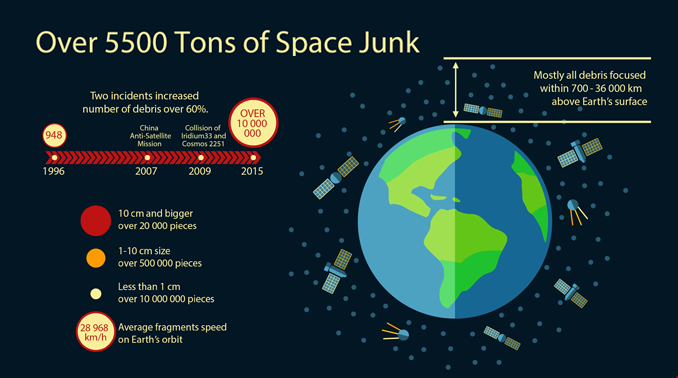
How much space junk orbits the Earth?
Did you know there are over 5500 tons of space junk above Earth’s surface? The majority of space junk is within the 700 to 36,000-kilometer range.
If you’ve seen the Academy Award-winning film “Gravity”, you’d probably think space is a pretty scary place.
A collision from a Russian rocket launch sparks a chain reaction causing debris to circle every 90 minutes.
Even the International Space Station and Hubble Telescope were part of the wreckage. It’s not entirely implausible. But it’s unlikely because everything is on different orbits.
The space junk problem is a man-made one. Here’s why there’s been a rise in space debris.
What started the rise of space junk?
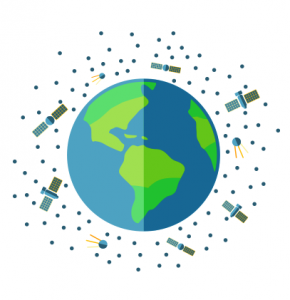
Space junk consists of parts that were once used by satellites or rockets that are still floating in orbit that we can’t bring back down to Earth.
There are an estimated 21,000 objects >10 cm and 500,000 objects <10 cm of space debris. Two incidents increased space debris by over 60%:
- CHINA ANTI-SATELLITE MISSION: In 2007, China launched a ballistic missile that collided with a weather and reconnaissance satellite.
- IRIDIUM-33 AND COSMOS-2251: An accidental collision between Iridium33 and Cosmos 2251 flung around debris in low Earth orbit.
Space junk is another problem that has arisen over the years and has gotten worse. But first, let’s define what it actually means.
Who watches satellites and space junk?

There are approximately 1000 operational satellites in orbit and this number has been steadily increasing over the years. One reason they don’t collide with each other is that they are continually being monitored by the North American Aerospace Defense Command (NORAD).
They keep a database of all known rocket launches and each orbit. If there was a critical type of scenario, satellites would have mini jet thrusters to move them around in orbit.
In the case of an onset collision, these thrusters can be used for safety. But these thrusters are also used for repositioning themselves in orbit to improve their own functionality.
So what are the triggers that could cause space debris? Here are three:
- Satellites colliding with other geostationary or non-geostationary satellites,
- Space debris or dead satellites stunning another satellite, or
- Asteroids or micro-meteorites hitting satellites are hard to predict. That’s why NASA’s Near Earth Object Program keeps a close eye on asteroids.
How do we map out space junk?
Silently, satellites gather volumes of data about our planet in various spectra. With a grand total of 13,955 satellites loaded on this satellite web map, you begin to see how vast our satellite ecosystem is.
Each satellite orbits around the Earth in a predictable trajectory. Filter between junk and non-junk and country of origin.
Space junk is a major problem for space agencies. These are pieces of broken or no-longer-needed items that orbit the Earth at high speeds.
The more space junk there is, the more likely it becomes that these unplanned collisions could happen and create even more space debris in what we call “a cascading effect”.
Don’t forget that Near Earth Objects (NEO) also puts our satellites at risk. If you want to learn more about space junk, please add any comments below.


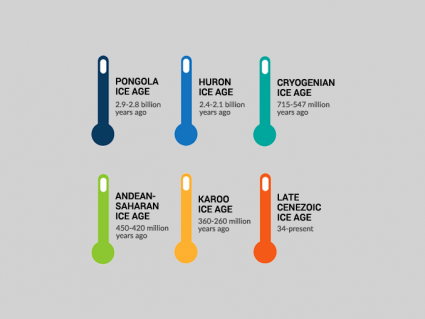
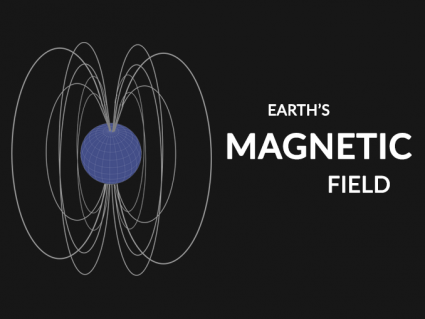
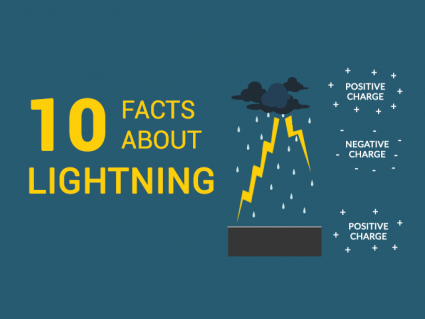
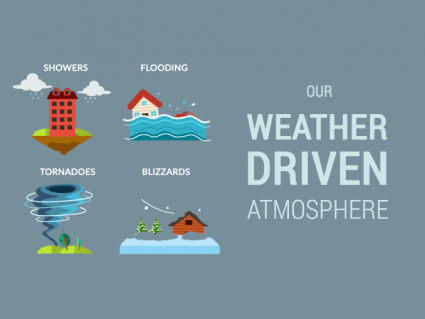
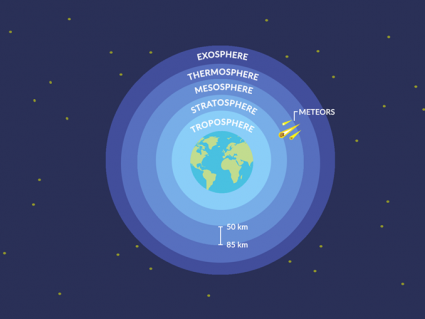
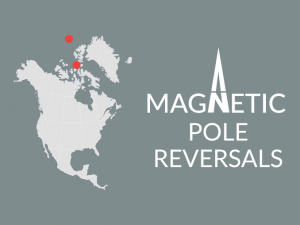

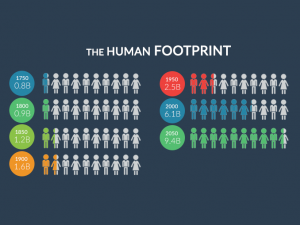
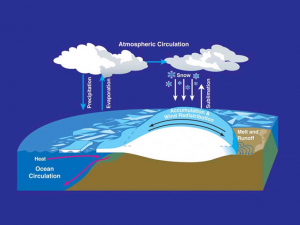
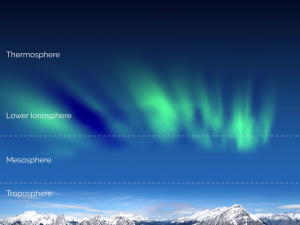


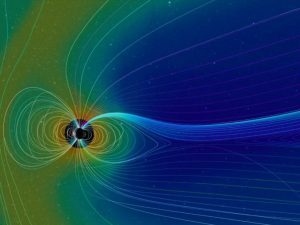
The reason why we have so much space junk is because these are satellites that we launched into our orbit. Although there are satellites that orbit other planets (such as the 2001 Mars Odyssey that orbits Mars), our main focus is our planet. Unfortunately, mostly collisions have led to this amount of space junk. There are some missions that aim to clean up junk, I read one happening from Japan Aerospace Exploration Agency (JAXA).
As for your question about the rings of Saturn, Neptune, Uranus, Jupiter… Think of these rings as leftovers from the beginning of our solar system. The gas planets have a very strong pull (gravity). It’s like a super-strong magnet that’s pulled in ice, dust, and rocks… forming like a hula hoop. The pieces in these planets rings are like cars on a racetrack. Each follow its own path around the planet and has been doing that for a bit after 4.5 billion years.
Why does the Earth have space junk and not other planets? Also why is there a ring around Saturn, Neptune, Uranus, Jupiter?
False generalized statement:
{One reason they (satellites) don’t collide} with each other is that they are continually being monitored by the North American Aerospace Defense Command (NORAD).
What does NORAD have to do with space collisions? Does Russia and China confer with NORAD before they send a rocket to space? No. Do a little research will ya?
Great satellite map. I’m teaching space exploration this year in Air Force JROTC and the map is terrific.